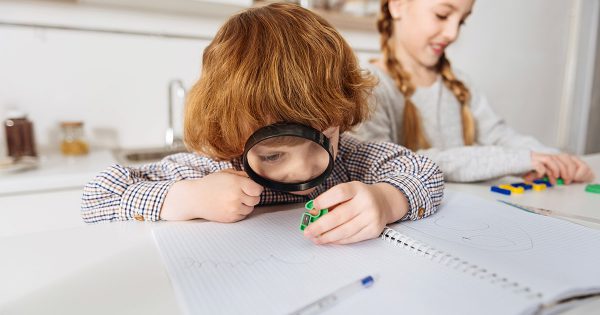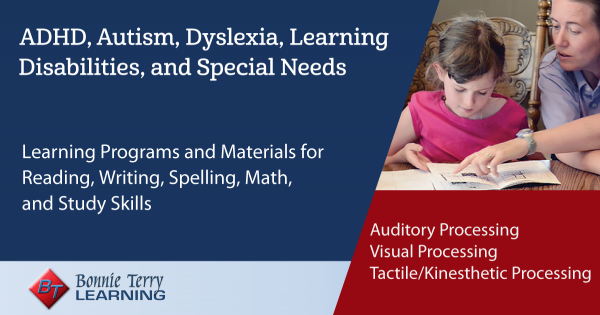‘Visual Processing’ Blog Posts

Laterality and Directionality: How Does it Relate to Learning?
February 16th, 2022 2022-02-17T15:24:24-08:00 2022-02-16T21:06:13-08:00We read from top to bottom and left to right. We form letters in specific directions. Even writing your letters correctly involves directionality. Starting letters at the top and moving down is easier and faster and coincides with how we read. Yet, kids left to there own often start writing letters from the bottom up. These are often the kids that haven’t learned the top down orientation of reading, starting at the top of the page and reading from left to right.

Auditory Closure, Visual Closure and Reading Fluency
November 27th, 2018 2018-11-28T21:28:06-08:00 2018-11-27T16:22:39-08:00Auditory and visual closure play an important role in reading fluency. Auditory closure is the ability to bring sounds and/or words together to gain meaning from them, visual closure is the ability to bring letters, partial letters, or words together to make sense of them.

Visual Discrimination and Reading Fluency
November 13th, 2018 2019-08-28T16:43:45-07:00 2018-11-13T03:43:30-08:00Visual discrimination is directly connected to reading fluency. Visual discrimination is the ability to discern subtle similarities and differences visually. This is the process of seeing details. What is the same? What is different? Shapes, sizes, and colors are details to be looked at. An additional part of visual discrimination is ‘form constancy.’

Visual Processing and Spelling
November 6th, 2017 2018-12-12T15:55:48-08:00 2017-11-06T12:00:43-08:00Difficulties with visual processing areas can affect spelling. Poor visual memory and visual discrimination skills lead to trouble with spelling.

Phonemic Awareness for Auditory Learners and Visual Learners
September 9th, 2015 2015-09-11T00:58:12-07:00 2015-09-09T01:24:54-07:00As you know, we learn through seeing, hearing, and doing. Learning to read incorporates each of those areas.
Today I’m talking about combining the auditory and visual components of reading in what is called phonemic awareness.
Phonemic Awareness:
Phoneme blending: Children listen to a sequence of separately spoken phonemes and then combine the phonemes to form a word. /d/ /o/ /g/ is dog. (This is the process used in decoding words.)
A Brain Base Learning Approach: The Visual Processing System
January 23rd, 2015 2015-03-07T22:31:58-08:00 2015-01-23T01:44:55-08:00Visual processing is one of the key areas involved with learning. Once you understand more about the visual processing system and what you can do to improve visual processing, learning becomes easier.
Auditory Processing and Learning…
September 24th, 2014 2017-09-15T22:22:24-07:00 2014-09-24T10:22:02-07:00Do your kids have trouble with:
- Following instructions?
- Rhyming words?
- Reading comprehension?
- Listening comprehension?
- Remembering facts?
- Reading aloud or dislike reading aloud?
- Spelling words accurately?
- Word problems?
These are all symptoms of difficulty with just one area of auditory processing. And auditory processing is one of the most common areas impacted in kids or adults with learning disabilities.
Back to School Year Contest Win this Awaken the Scholar Within Program
September 17th, 2014 2016-08-17T01:46:26-07:00 2014-09-17T10:06:06-07:00Awaken the Scholar Within VAK Visual, Auditory, and Kinesthetic Therapy Program provides activities and exercises designed specifically to address the underlying root causes of learning problems. Bonnie Terry Learning is offering one of our ASW VAK Therapy Programs for FREE. Just enter the contest to win!
The activities in the program typically take any where from 3 minutes to 10 minutes. Each day (5-days a week) there are several exercises to do that can take up to 20 minutes a day. Many of the activities are ones you can do with the whole family. Some of the activities are paper and pencil activities. Other activities are movement activities such as specific bean bag toss activities. Doing these simple movement activities activates the brain so learning becomes easier.
Improve Auditory Learning Skills with VAK Therapy
September 9th, 2014 2016-08-17T05:42:15-07:00 2014-09-09T18:25:52-07:00What if… You found a learning disability solution that is not just another quick fix? What if… This school year, you learned to help your child gain new skills and become a better student and learning became easier?? In my last post, I wrote about how we take in information through the senses: visual processing, […]



















